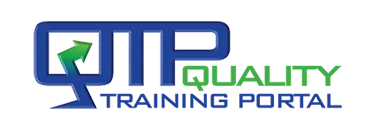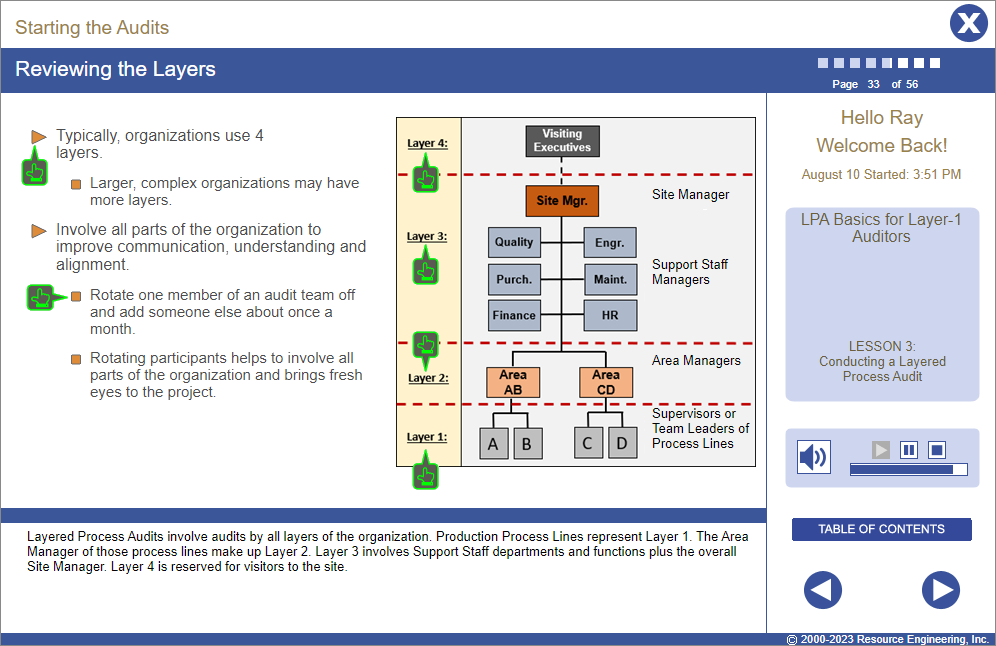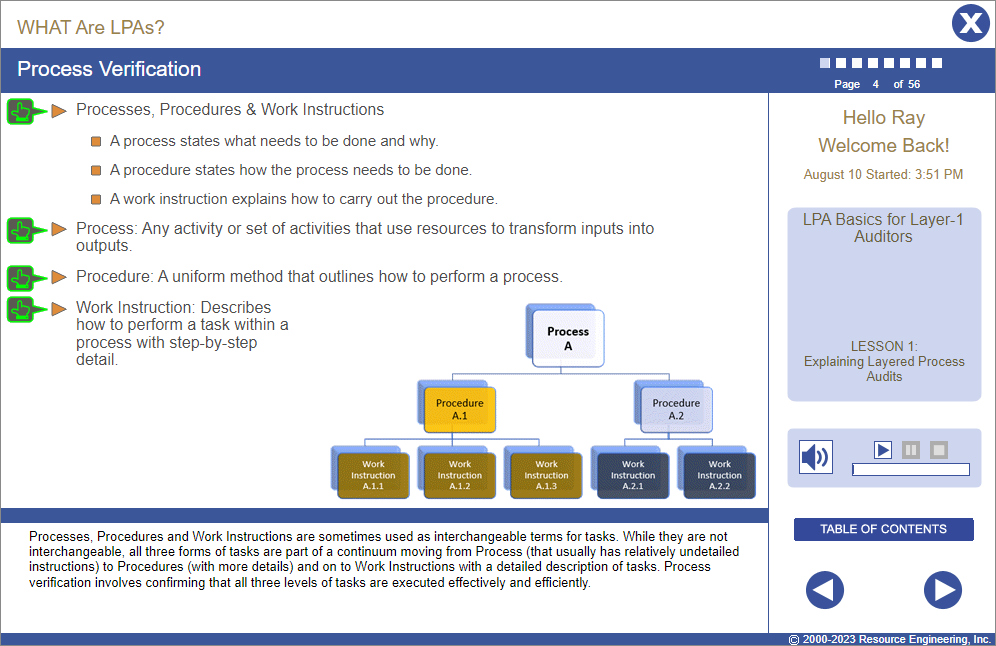Course Information
LPA Basics for Layer 1 Auditors Training
Learners will be able to:
- Describe what a Layered Process Audit is.
- Explain the benefits of a Layered Process Audit for the organization.
- Conduct Layer-1 audits.
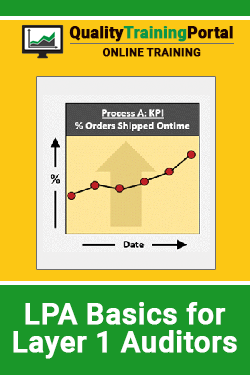
About This Course
What are Layered Process Audits?
LPAs are a unique technique designed to help improve organization-wide performance by engaging all levels or “layers” of the organization. The LPA approach is a proven means to help align the entire organization on Key Performance Indicators, reinforce the responsibilities and accountabilities of all “layers” to meet those objectives and help identify opportunities to improve processes and their performance.
The term “Layered Process Audit” does not refer to a conventional internal audit but rather represents a technique that calls for short, focused audits performed by multiple levels (or layers) of the organization. LPAs involve a wide range of people from the organization engaged in verifying the viability of selected processes, not a small team of internal auditors. This approach helps align the organizational “layers” into a continuum where all understand what is important to ensure outcomes are successful and that all members are committed to making it happen.
Give Layer 1 LPA Auditors the Tools They Need to Carry Out Effective Audits
LPA Basics for Layer 1 Auditors training prepares learners to conduct Layer 1 audits in organizations using Layered Process Audits. Participants will learn what a Layered Process Audit is and the benefits it brings to an organization. They will also be introduced to the 10-step approach to planning, developing and rolling out LPAs, what their responsibilities are as a Layer 1 Auditor and how to monitor results, track progress and make suggestions to improve the LPA Program.
Upon successful completion of this training, participants will have a solid comprehension of the purpose, objectives and benefits of LPAs and will be prepared to carry out the responsibilities of their role as Layer 1 auditors. In addition, they will know the purpose and process for each layer of the process audits.
- None.
- English (EN-US)
- Chinese (simplified) (ZH)
- Czech (CS)
- French (FR)
- German (DE)
- Italian (IT)
- Japanese (no audio) (JA)
- Korean (no audio) (KO)
- Polish (PL)
- Portuguese (Brazilian) (PT-BR)
- Romanian RO)
- Russian (RU)
- Spanish (ES)
- Vietnamese (no audio) (VI)
Course Objectives
Lesson 1 | Explaining Layered Process Audits
- Provide an overview of what Layered Process Audits are and how they work.
- Preview the benefits of conducting Layered Process Audits.
Lesson 2 | Planning a Layered Process Audit
- Become aware of a proven 10-step plan to develop an LPA program.
- Understand the roles of the LPA Planning Team the Overall Process Owner and Local Process Owners.
Lesson 3 | Conducting a Layered Process Audit
- Know how to establish the frequency of audits and set the audit frequency for each Layer.
- Realize the role of preformatted LPA Check Sheets.
- Recognize the value of visual data displays of audit results.
- Understand the periodic reviews and adjustments necessary to retain the viability of the program.
Lesson 4 | Helpful Tips for LPAs
- Be aware of tips and techniques that can lead to more effective Layered Process Audits and successful outcomes.
Challenge
- An assessment of the learner’s progress in this course.
Course Outline
- Understand what a Layered Process Audit is and recognize the benefits it can bring to an organization.
- Be aware of a proven 10 step approach used to plan, develop and rollout LPAs.
- Learn the roles and responsibilities of Layer-1 Auditors.
- Appreciate how to monitor results, track progress, and make suggestions to improve the LPA program.

4.8 out of 5 stars
You may also be interested in…
- Layered Process Audits – This courses is similar to LPA Basics for Layer 1 Auditors except it includes a lesson on preparing to roll out LPAs and covers all levels of LPAs.
- Root Cause Analysis with Corrective Action – Leads the learner through a four-step process to get to the root cause (source) of problems to eliminated problems for good.
- The Five Whys – Focused training in how to use the Five Whys technique to get to the root cause of problems.
